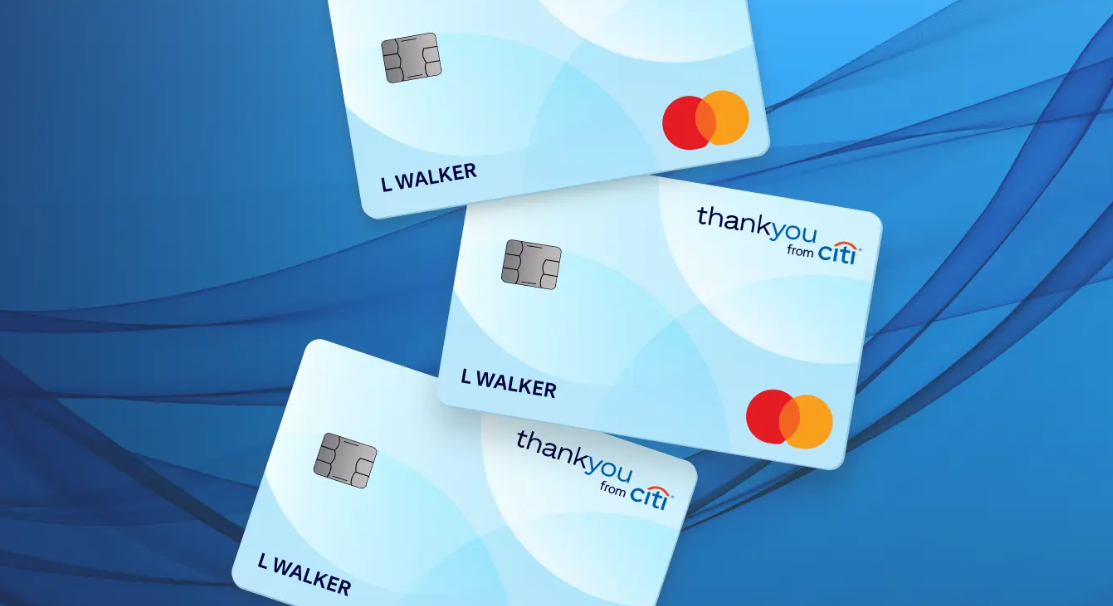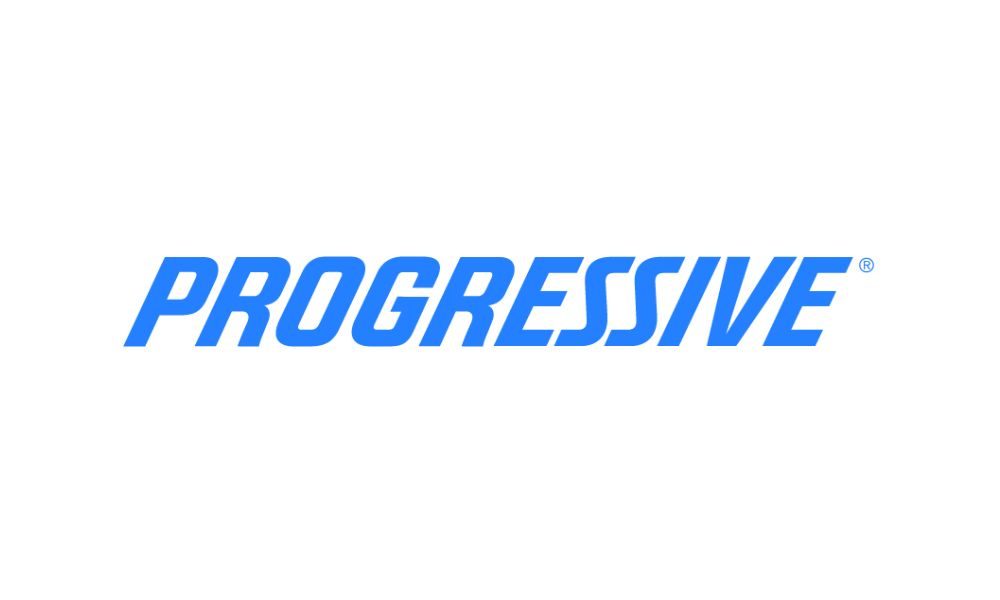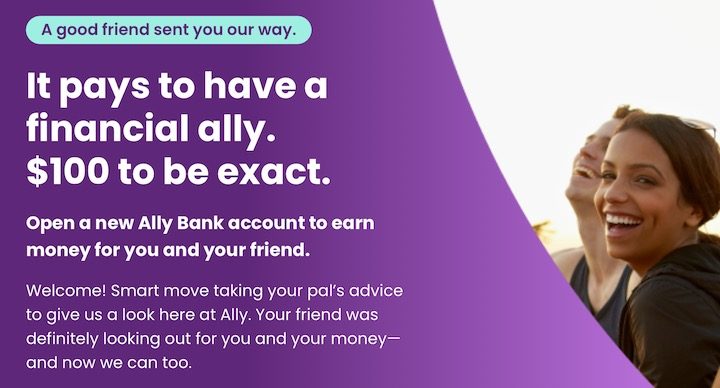Our goal is to give you the tools and confidence you need to improve your finances. Although we receive compensation from our partner lenders, whom we will always identify, all opinions are our own. Credible Operations, Inc. NMLS # 1681276, is referred to here as "Credible."
While the average student loan debt for college students is $39,351, some students might end up leaving school with $70,000 or more in student loans.
Paying off this amount in student loans can feel overwhelming.
For example, if you had $70,000 in federal student loans and made payments under the standard 10-year repayment plan with a 6.22% interest rate, you’d end up with a monthly payment of $785 and a total repayment cost of $94,188.
Thankfully, there are several strategies that could help you more easily manage $70,000 in student loans.
Here’s how to pay off $70,000 in student loans:
- Refinance your student loans
- Consider using a cosigner when refinancing
- Explore income-driven repayment plans
- Pursue loan forgiveness for federal student loans
- Adopt the debt avalanche or debt snowball method
1. Refinance your student loans
Student loan refinancing is the process of paying off your old loans with a new loan. Depending on your credit, you might get a lower interest rate through refinancing, which could save you money on interest and even potentially help you pay off your loans faster.
Or you could opt to extend your repayment term to reduce your monthly payments and lessen the strain on your budget — though keep in mind that this means you’ll pay more in interest over time.
Keep in mind: You can refinance both federal and private loans. However, refinancing your federal student loans will cost you access to federal benefits and protections — such as income-driven repayment plans and student loan forgiveness programs.If you decide to refinance your student loans, be sure to consider as many lenders as possible so you can find the right loan for your situation.
Credible makes this easy — you can compare your prequalified rates from our partner lenders in the table below in just two minutes.
LenderFixed rates from (APR)Variable rates from (APR)Loan terms (years)Loan amountsCredible Rating Credible lender ratings are evaluated by our editorial team with the help of our loan operations team. The rating criteria for lenders encompass 78 data points spanning interest rates, loan terms, eligibility requirement transparency, repayment options, fees, discounts, customer service, cosigner options, and more. Read our full methodology. View details 4.54%+ N/A10, 15, 20$7,500 up to up to $200,000
(larger balances require special approval)
Credible Rating Credible lender ratings are evaluated by our editorial team with the help of our loan operations team.
The rating criteria for lenders encompass 78 data points spanning interest rates, loan terms, eligibility requirement transparency, repayment options, fees, discounts, customer service, cosigner options, and more. Read our full methodology. View details 2.15%+ 1.87%+ 5, 7, 10, 15, 20$10,000 up to $250,000
(depending on degree)
- Fixed APR: 2.15%+
- Variable APR: N/A
- Min. credit score: Does not disclose
- Loan amount: $10,000 to $400,000
- Loan terms (years): 5, 7, 10, 15, 20
- Repayment options: Military deferment, forbearance
- Fees: Late fee
- Discounts: Autopay
- Eligibility: Must have a credit score of at least 720, a minimum income of $60,000, and must be a resident of Texas
- Customer service: Email, phone
- Soft credit check: Does not disclose
- Cosigner release: No
- Loan servicer: Firstmark Services
- Max. Undergraduate Loan Balance: $100,000 - $149,000
- Max.
Graduate Loan Balance: $200,000 - $400,000
- Offers Parent PLUS Refinancing: Does not disclose
Credible Rating Credible lender ratings are evaluated by our editorial team with the help of our loan operations team. The rating criteria for lenders encompass 78 data points spanning interest rates, loan terms, eligibility requirement transparency, repayment options, fees, discounts, customer service, cosigner options, and more. Read our full methodology. View details 2.44%+1 1.99%+1 5, 7, 10, 15, 20$10,000 to $500,000
(depending on degree and loan type)
- Fixed APR: 2.44%+1
- Variable APR: 1.99%+1
- Min. credit score: Does not disclose
- Loan amount: $10,000 to $750,000
- Loan terms (years): 5, 7, 10, 15, 20
- Repayment options: Immediate repayment, academic deferment, military deferment, forbearance, loans discharged upon death or disability
- Fees: Late fee
- Discounts: Autopay, loyalty
- Eligibility: Must be a U.S. citizen or permanent resident and have at least $10,000 in student loans
- Customer service: Email, phone, chat
- Soft credit check: Yes
- Cosigner release: After 24 to 36 months
- Loan servicer: Firstmark Services
- Max.
Undergraduate Loan Balance: $100,000 to $149,000
- Max. Graduate Loan Balance: Less than $150,000
- Offers Parent PLUS Refinancing: Yes
Credible Rating Credible lender ratings are evaluated by our editorial team with the help of our loan operations team. The rating criteria for lenders encompass 78 data points spanning interest rates, loan terms, eligibility requirement transparency, repayment options, fees, discounts, customer service, cosigner options, and more. Read our full methodology.
View details 2.99%+2 2.94%+2 5, 7, 10, 12, 15, 20$5,000 to $300,000
(depending on degree type)
- Fixed APR: 2.99%+2
- Variable APR: 2.94%+2
- Min. credit score: Does not disclose
- Loan amount: $5,000 to $300,000
- Loan terms (years): 5, 7, 10, 12, 15
- Repayment options: Military deferment, forbearance, loans discharged upon death or disability
- Fees: Late fee
- Discounts: Autopay
- Eligibility: All states except for ME
- Customer service: Email, phone, chat
- Soft credit check: Yes
- Cosigner release: After 24 to 36 months
- Loan servicer: College Ave Servicing LLC
- Max. Undergraduate Loan Balance: $100,000 to $149,000
- Max. Graduate Loan Balance: Less than $300,000
- Offers Parent PLUS Refinancing: Yes
Credible Rating Credible lender ratings are evaluated by our editorial team with the help of our loan operations team. The rating criteria for lenders encompass 78 data points spanning interest rates, loan terms, eligibility requirement transparency, repayment options, fees, discounts, customer service, cosigner options, and more.
Read our full methodology. View details 2.16%+ 2.11%+ 5, 7, 10, 15, 20$5,000 to $500,000
- Fixed rate: 2.44%+1
- Variable rate: 1.99%+1
- Min. credit score: 680
- Loan amount: $5,000 to $500,000
- Cosigner release: Yes
- Loan terms (years): 5, 7, 10, 15, 20
- Repayment options: Academic deferment, forbearance, loans discharged upon death or disability
- Fees: Late fee
- Discounts: Autopay
- Eligibility: Available in all states, except MS and NV
- Customer service: Email, phone, chat
- Soft credit check: Yes
- Loan servicer: FirstMark
- Max. undergraduate loan balance: $500,000
- Max. graduate loan balance: $500,000
- Offers Parent PLUS refinancing: Yes
- Min. income: $65,000 (for 15- and 20-year products)
Credible Rating Credible lender ratings are evaluated by our editorial team with the help of our loan operations team. The rating criteria for lenders encompass 78 data points spanning interest rates, loan terms, eligibility requirement transparency, repayment options, fees, discounts, customer service, cosigner options, and more. Read our full methodology.
View details 3.91%+5 1.81%+5 5, 10, 15, 20$1,000 to $250,000
- Fixed APR: 3.91%+5
- Variable APR: 1.81%+5
- Min. credit score: 700
- Loan amount: $7,500 to $200,000
- Loan terms (years): 5, 10, 15, 20
- Repayment options: Immediate repayment, academic deferment, forbearance, loans discharged upon death or disability
- Fees: None
- Discounts: Autopay
- Eligibility: Must be a U.S. citizen or permanent resident and submit two personal references
- Customer service: Email, phone
- Soft credit check: Yes
- Cosigner release: After 36 months
- Loan servicer: Granite State Management & Resources (GSM&R)
- Max. Undergraduate Loan Balance: $150,000 to $249,000
- Max. Graduate Loan Balance: $150,000 to $199,000
- Offers Parent PLUS Refinancing : Yes
Credible Rating Credible lender ratings are evaluated by our editorial team with the help of our loan operations team. The rating criteria for lenders encompass 78 data points spanning interest rates, loan terms, eligibility requirement transparency, repayment options, fees, discounts, customer service, cosigner options, and more.
Read our full methodology. View details 2.47%+3 2.39%+3 5, 7, 10, 12, 15, 20$15,000 to $250,000
- Fixed APR: 2.47%+3
- Variable APR: 2.39%+3
- Min. credit score: 680
- Loan amount: $15,000 to $250,000
- Loan terms (years): 5, 7, 10, 12, 15, 20
- Repayment options: Forbearance
- Fees: None
- Discounts: None
- Eligibility: Must be a U.S. citizen or permanent resident, have at least $15,000 in student loan debt, and have a bachelor’s degree or higher from an approved school
- Customer service: Email, phone
- Soft credit check: Yes
- Cosigner release: No
- Loan servicer: Mohela
- Max. Undergraduate Loan Balance: $250,000
- Max. Graduate Loan Balance: $250,000
- Offers Parent PLUS Refinancing: Yes
Credible Rating Credible lender ratings are evaluated by our editorial team with the help of our loan operations team.
The rating criteria for lenders encompass 78 data points spanning interest rates, loan terms, eligibility requirement transparency, repayment options, fees, discounts, customer service, cosigner options, and more. Read our full methodology. View details 3.47%+4 2.44%+4 5, 10, 15, 20$5,000 - $250,000
- Fixed APR: 3.47%+4
- Variable APR: 2.44%+4
- Min. credit score: 670
- Loan amount: $5,000 to $250,000
- Loan terms (years): 5, 10, 15, 20
- Repayment options: Academic deferment, military deferment, forbearance
- Fees: Late fee
- Discounts: Autopay
- Eligibility: Must be U.S. citizen or permanent resident
- Customer service: Email, phone, chat
- Soft credit check: Yes
- Cosigner release: Yes
- Max undergraduate loan balance: $250,000
- Max graduate loan balance: $250,000
- Offers Parent PLUS refinancing: Yes
Credible Rating Credible lender ratings are evaluated by our editorial team with the help of our loan operations team. The rating criteria for lenders encompass 78 data points spanning interest rates, loan terms, eligibility requirement transparency, repayment options, fees, discounts, customer service, cosigner options, and more.
Read our full methodology. View details 2.24%+ 7N/A5, 7, 10, 12, 15, 20Up to $300,000
- Fixed APR: 2.24%+ 7
- Variable APR: N/A
- Min. credit score: 670
- Loan amount: Up to $300,000
- Loan terms (years): 5, 7, 10, 15, 20
- Time to fund: Usually one business day
- Repayment options: Academic deferral, military deferral, forbearance, death/disability discharge
- Fees: None
- Discounts: Autopay
- Eligibility: Available in all 50 states
- Customer service: Email, phone
- Soft credit check: Yes
- Cosigner release: After 24 months
- Max. undergraduate loan balance: $300,000
- Max. graduate balance: $300,000
- Offers Parent PLUS loans: Yes
- Min. income: None
Credible Rating Credible lender ratings are evaluated by our editorial team with the help of our loan operations team. The rating criteria for lenders encompass 78 data points spanning interest rates, loan terms, eligibility requirement transparency, repayment options, fees, discounts, customer service, cosigner options, and more. Read our full methodology.
View details 3.05%+ N/A7, 10, 15$10,000 up to the total amount of qualified education debt
- Fixed APR: 3.05%+
- Variable APR: N/A
- Min. credit score: 670
- Loan amount: $10,000 up to the total amount
- Loan terms (years): 7, 10, 15
- Repayment options: Military deferment, loans discharged upon death or disability
- Fees: None
- Discounts: None
- Eligibility: Must be a U.S. citizen or permanent resident and have at least $10,000 in student loans
- Customer service: Email, phone
- Soft credit check: Yes
- Cosigner release: No
- Loan servicer: AES
- Max. Undergraduate Loan Balance: No maximum
- Max. Gradaute Loan Balance: No maximum
- Offers Parent PLUS Refinancing: Yes
Credible Rating Credible lender ratings are evaluated by our editorial team with the help of our loan operations team. The rating criteria for lenders encompass 78 data points spanning interest rates, loan terms, eligibility requirement transparency, repayment options, fees, discounts, customer service, cosigner options, and more.
Read our full methodology. View details 2.89%+ N/A5, 8, 12, 15$7,500 to $300,000
- Fixed APR: 2.89%+
- Variable APR: N/A
- Min. credit score: 670
- Loan amount: $7,500 to $300,000
- Loan terms (years): 5, 8, 12, 15
- Repayment options: Does not disclose
- Fees: None
- Discounts: None
- Eligibility: Must be a U.S. citizen and have and at least $7,500 in student loans
- Customer service: Email, phone, chat
- Soft credit check: Yes
- Cosigner release: After 12 months
- Loan servicer: PenFed
- Max. Undergraduate Loan Balance: $300,000
- Max. Graduate Loan Balance: $300,000
- Offers Parent PLUS Refinancing: Yes
Credible Rating Credible lender ratings are evaluated by our editorial team with the help of our loan operations team.
The rating criteria for lenders encompass 78 data points spanning interest rates, loan terms, eligibility requirement transparency, repayment options, fees, discounts, customer service, cosigner options, and more. Read our full methodology. View details 2.69%+ N/A5, 10, 15$7,500 up to $250,000
(depending on highest degree earned)
- Fixed APR: 2.69%+
- Variable APR: N/A
- Min. credit score: 680
- Loan amount: $7,500 to $250,000
- Loan terms (years): 5, 10, 15
- Repayment options: Academic deferment, military deferment, forbearance, loans discharged upon death or disability
- Fees: None
- Discounts: Autopay
- Eligibility: Available in all 50 states; must also have at least $7,500 in student loans and a minimum income of $40,000
- Customer service: Email, phone
- Soft credit check: Does not disclose
- Cosigner release: No
- Loan servicer: Rhode Island Student Loan Authority
- Max. Undergraduate Loan Balance: $150,000 - $249,000
- Max.
Graduate Loan Balance: $200,000 - $249,000
- Offers Parent PLUS Refinancing: Yes
Credible Rating Credible lender ratings are evaluated by our editorial team with the help of our loan operations team. The rating criteria for lenders encompass 78 data points spanning interest rates, loan terms, eligibility requirement transparency, repayment options, fees, discounts, customer service, cosigner options, and more. Read our full methodology. View details 2.49%+ 6 1.99%+ 65, 7, 10, 15, 20$5,000 up to the full balance of your qualified education loans
- Fixed APR: 2.49%+ 6
- Variable APR: 1.99%+ 6
- Min. credit score: Does not disclose
- Loan amount: $5,000 up to the full balance
- Loan terms (years): 5, 7, 10, 15, 20
- Repayment options: Academic deferment, military deferment
- Fees: None
- Discounts: Autopay, loyalty
- Eligibility: Available in all 50 states
- Customer service: Email, phone, chat
- Soft credit check: Yes
- Cosigner release: No
- Max undergraduate loan balance: No maximum
- Max graduate loan balance: No maximum
- Offers Parent PLUS refinancing: Yes
Compare Now
Trustpilot
All APRs reflect autopay and loyalty discounts where available | 1Citizens Disclosures | 2College Ave Disclosures | 5EDvestinU Disclosures | 3 ELFI Disclosures | 4INvestEd Disclosures | 7ISL Education Lending Disclosures | 6SoFi Disclosures
2.
Consider using a cosigner when refinancing
You’ll typically need good to excellent credit to get approved for refinancing — a good credit score is usually considered to be 700 or higher. There are also several lenders that offer refinancing for bad credit, but these loans tend to come with higher rates compared to good credit loans.
If you have poor or fair credit and are struggling to get approved, consider applying with a cosigner. Even if you don’t need a cosigner to qualify, having one could get you a lower interest rate than you’d get on your own.
Tip: A cosigner can be anyone with good credit — such as a parent, another relative, or a trusted friend — who is willing to share responsibility for the loan. Just keep in mind that this means they’ll be on the hook if you can’t make your payments.Learn More: Best Student Refinance Companies: Reviewed and Rated
3.
Explore income-driven repayment plans
If you have federal student loans, signing up for an income-driven repayment (IDR) plan could be a good idea. On an IDR plan, your payments are based on your income — typically 10% to 20% of your discretionary income.
Additionally, you could have any remaining balance after 20 to 25 years, depending on the plan.
Tip: Signing up for an IDR plan might significantly reduce your monthly payments. However, keep in mind that by extending your repayment term, you could end up paying much more in interest over time.Here’s how the four main IDR plans compare to a few other federal repayment plan options:
Repayment planWho’s eligible?Monthly paymentRepayment termsEligible for loan forgiveness? Standard repayment planAny borrower with Direct or FFEL LoansAmount when payments are spread equally over 10 years (usually $50 minimum) 10 yearsNo Graduated repayment planAny borrower with Direct or FFEL LoansDepends on loan amount(payments start low and increase every 2 years)10 yearsNo Extended repayment planAny borrower with more than $30,000 in Direct or FFEL LoansFixed: Spread evenly over up to 25 years
Graduated: Depends on loan amount (start low and increase every 2 years)Up to 25 yearsNo Income-Based Repayment (IBR)Borrowers with partial financial hardship
(no Parent PLUS Loans)For borrowers who took out loans after July 1, 2014: 10% of discretionary income
(never more than 10-year plan)
For borrowers who took out loans before July 1, 2014: 15% of discretionary income
(never more than 10-year plan)For borrowers who took out loans after July 1, 2014: 20 years
For borrowers who took out loans before July 1, 2014: 25 yearsYes Pay As You Earn (PAYE)
- Must have partial financial hardship
- Must have borrowed on or after Oct. 1, 2007
(never more than 10-year plan)20 yearsYes Revised Pay As You Earn (REPAYE)Any borrower
(no Parent PLUS Loans)10% of discretionary income
(no cap)20 years
(25 years if repaying grad school debt)Yes Income Contingent Repayment (ICR)Any borrower
(Parent PLUS Loans must be consolidated)20% of discretionary income
(or income-adjusted payment on 12-year plan)25 yearsYes
Check Out: PAYE vs. REPAYE: Which Repayment Plan Is Right for You?
4.
Pursue loan forgiveness for federal student loans
There are several student loan forgiveness programs available to federal student loan borrowers. Most of these require that you work in a certain field and make qualifying payments for a specific amount of time.
For example: If you are employed by a nonprofit or government agency and make qualifying payments for 10 years, you might qualify for Public Service Loan Forgiveness (PSLF).Or if you’re a teacher who works at a low-income school, you could be eligible for the Teacher Loan Forgiveness Program.
Some other occupations that might qualify for a forgiveness program include:
- Dentists
- Doctors
- Lawyers
- Nurses
- Pharmacists
- Teachers
Learn More: How Often Can You Refinance Student Loans?
5. Adopt the debt avalanche or debt snowball method
If you have multiple student loans and aren’t eligible for refinancing or forgiveness, you might just need to concentrate on paying off your loans as quickly as possible.
Here are two strategies that could help:
Debt avalanche method
With the debt avalanche method, you’ll focus on paying off your loan with the highest interest rate first while continuing to make the minimum payments on your other loans.
You’ll then move on to the loan with the next-highest interest rate — continuing until all of your loans are paid off.
Tip: The debt avalanche method can save you money on interest charges — but it can take a while to see any results. If you’re more motivated by small wins, the debt snowball method might be a better fit for you.Debt snowball method
With the debt snowball method, you’ll focus on paying off your smallest loan first while making the minimum payments on your other loans.
After you repay this loan, you’ll move on to the next-smallest loan — continuing until all of your loans have been paid off.
Tip: The debt snowball method can be particularly motivating since it typically offers quick results. But if you would rather save money on interest and don’t mind waiting to see your savings, the debt avalanche method could be a better choice.Check Out: Private Student Loan Consolidation
Frequently asked questions
Here are the answers to a few commonly asked questions about paying off $70,000 in student loans:
How long does it take to pay off $70k student loans?
This will depend on the type of student loans you have and what repayment plan you choose.
- Federal student loans: You could have 10 to 25 years to repay federal loans, depending on the repayment plan you choose. You could also opt to consolidate your loans into a Direct Consolidation Loan and extend your repayment term up to 30 years.
- Private student loans: Terms on private loans typically range from five to 20 years, depending on the lender.
Can I file for bankruptcy to eliminate my student loan debt?
Yes, you can file bankruptcy for student loan debt.
However, it can be difficult to actually have your loans discharged. If you file for Chapter 7 or Chapter 13 bankruptcy, you’ll have to prove to the court that paying them would cause an undue hardship for you and your dependents, which generally means that you wouldn’t be able to afford basic needs if you continue to repay the debt.
If the court decides in your favor, your loans could be:
- Fully discharged
- Partially discharged with you responsible for the remainder of the balance
- Adjusted with different terms to make repayment easier (such as a lower interest rate)
Are student loans forgiven after 20 years?
This depends on the type of student loans you have.
- If you have federal student loans, you could be eligible for forgiveness after 20 to 25 years on an IDR plan. There are also other forgiveness programs that offer forgiveness sooner — for example, you could have your loans forgiven after 10 years if you qualify for PSLF.
- If you have private student loans, you aren’t eligible for forgiveness.
In this case, you might consider refinancing your loans for a lower interest rate to potentially reduce your repayment time.
Do children inherit student debt?
Generally no. Here’s what you can typically expect:
- Federal student loans are discharged upon the death of the borrower. If you have a Parent PLUS Loan, it will be discharged if you or the student who benefitted from it passes away.
- Private student loans are often discharged similarly to federal loans. However, keep in mind that this is at the discretion of the lender.
If the lender doesn’t offer a death discharge option, then your private loans will be considered part of your estate and will be paid off by your assets.
Taylor Medine is a Credible authority on personal finance. Her work has been featured on Bankrate, Experian, The Balance, Business Insider, Credit Karma, and more. She’s also the author of The 60-Minute Money Plan, a self-published intro to budgeting guide for people who hate budgeting.
Read MoreHome » All » Student Loan Refinancing » How to Pay Off $70,000 in Student Loans
Original Article






